The Next Generation of Military Prosthetics Is Breaking New Ground
At the Smithsonian’s Military Invention Day, visitors experienced how military innovation is helping society
/https://tf-cmsv2-smithsonianmag-media.s3.amazonaws.com/filer/fc/3e/fc3e59ab-89bb-4e65-bdc6-3e02e33e110c/20170520133002web.jpg)
With faces intent, 11-year-old Nicholas Wilt and his nine-year-old brother Michael are bent over a table full of gadgets trying to create a prosthetic hand. They had been working for about 20 minutes under the watchful eyes of Tim Pula, the interpretive exhibit coordinator at the Smithsonian’s Lemelson Center for the Study of Invention and Innovation.
“Are you getting closer and closer? Have you had to solve any problems to get there?” Pula asks Nicholas.
“Yes,” Nicholas says, pointing at a particular gear. “This wouldn’t stay put, so I had the idea to use something else to keep it still!”
This is what Military Invention Day was all about this past weekend at the Smithsonian’s National Museum of American History. All over the museum, excited children and fascinated adults gaped at technology that seemed impossible only a few decades ago. Visitors had a chance to see more than 30 exciting new inventions from the military and technology firms, and discover ways the innovations will affect their daily lives in the future. In addition to exhibits on the history of night vision technology, and a look at what Marines may soon be doing on the battlefield, people got a look at some other pretty cool technology, including prosthetics.
“We came out to see the White House,” explains the boys' mother Whitney Michael. “But as soon as we walked in, Nicholas found the military inventions and he’s always wanted to join the military. . . . So he was very interested and I work as a therapist with people with prosthetic devices so they’re interested in those things and to see how they work.”
The Smithsonian’s Pula says some of the kids who have tried their luck at building prosthetic hands from LEGO pieces, 3D printed joints, little electronic brains, an Arduino board and a potentiometer have created some fascinating work.
“We saw kids create hands that worked like pinchers. We saw kids who created hands that had solid, non-moving opposable joints. We saw some kids take a single finger and actually put a non-moving opposable joint on it and actually use it to pick up something as big as a power drill,” says Pula excitedly. “There was a girl today that . . . invented a way to pick up this little piece maybe seven sheets of paper thick. That was very impressive!”
That type of innovation has been great for people like Fred Downs, the former U.S. Army Lt. Platoon leader. He’s been wearing a prosthetic device that ended in a hook since 1968, when he stepped on a “Bouncing Betty” mine in Vietnam on combat patrol and lost his right arm. But now, he’s wearing the LUKE prosthetic arm.
LUKE stands for Life Under Kinetic Evolution, but it also references the prosthetic arm the fictional Luke Skywalker ended up wearing after confronting Darth Vader in Star Wars Episode 5: The Empire Strikes Back. The modular arm is tan and silver, looks friendly, and Downs can move it with his feet.
“So if I open my toes up, the grip (on the hand) opens up. Then I move my toes down with my heel up, it closes up, down just like that,” says Downs, demonstrating. “Now when I rotate to the right, the hand rotates to the right. When it rotates to the left, the hand rotates to the left. . . . I use my foot to change the grip.”
Downs has had the LUKE arm for almost a year, and it records all of the data from every single movement so the engineers can take a look at what’s happening and make it more efficient. LUKE is funded by the Defense Advanced Research Projects Agency (DARPA), and uses technology created by DEKA Integrated Solutions Corp. Downs, formerly the National Director of Prosthetics and Sensory Aids Service for the U.S. Department of Veterans Affairs, says this technology will help the increasing number of amputees who survive their injuries.
“I like having the ability to grasp with my left hand. Now I can use both my hands together when I’m working in a workshop or in the kitchen. That’s been extremely nice to have after all these years of losing that,” Downs says.
Standing right next to Downs, was a man wearing what one might describe as a biker version of a prosthetic arm. The Modular Prosthetic Limb (MPL) from Johns Hopkins Applied Physics Laboratory and DARPA, looks like the iconic arm from the Terminator movies. Johnny Matheny, a tall, bald man sporting a slick looking silver and black limb on his left side, says it’s a “great” arm.
“This one I can train to do anything your normal arm, hand can do. The LUKE arm has either four or six pre-sets. . . . He works it with his feet. I work mine with my mind,” explains Matheny, who lost his arm to cancer in 2008. “He wears his traditionally with a socket and straps. I wear mine with osseointegration, which is titanium implanted directly into the marrow of my bone. . . .This arm is reacting with the muscles in my residual stump. I had surgery called targeted muscle reinnervation. They take the nerve endings that normally would have gone down to the lower end (of my arm) and re-implanted them into my stump, and now I think the thoughts in the signals down to the stump.”
The bands that encircle Matheny’s stump then pick up the information from his thoughts, and send them to the arm via Bluetooth. He says by next year, he’s hoping that sensory surgery will allow him to feel with his prosthetic arm almost as well as he does with his natural arm. When one touches the fingertips of the MPL, it feels smooth, but with a feathery vibration like one feels when one presses human fingertips together.
“When you’re thinking, you’re thinking just as your natural hand. I think, ‘close hand and open hand, bend and straighten the elbow’ is right off the bat. And then as the targeted muscle reinnervation was growing in, then the rest of the things will start growing in with things like a pinch point and different grasps and all of that. The last thing that grows in is individual finger movement which usually takes about a year and a half.”
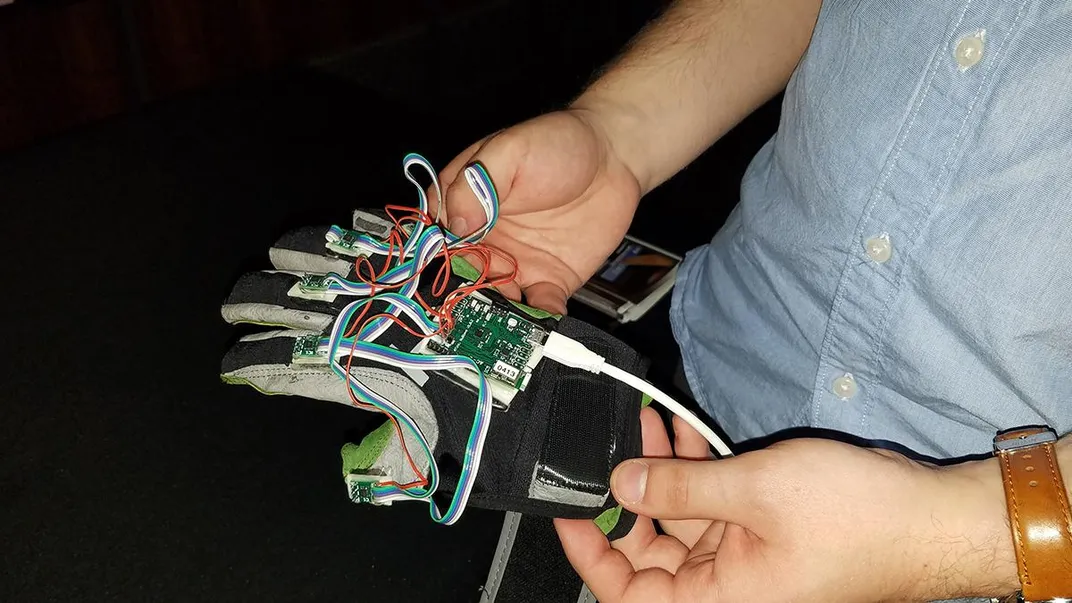
On the same floor, Brandon Russell was demonstrating the NuGlove, by Anthrotronix. It looks like a regular work glove, except for the wires extending from the wrists to the fingers. It’s a gesture recognition glove with inertial sensors on each finger as well as on the back of the hand, and Russell was standing in front of a computer screen doing the American Sign Language alphabet while the letters he formed were highlighted on the screen in front of him. But it can do much more than operate a computer. It can control robots.
“We’ve integrated with IED disposal robots. We can use a gesture to go into a drive mode, and it will bring the camera down in front and then you can drive around using what we call proportional control. . . . We’ve also integrated with simulations. You can use it in game engines like virtual reality,” Russell says.
NuGlove is also used to train troops on how to turn the valves and find their way around the littoral combat ships used by the U.S. Navy.
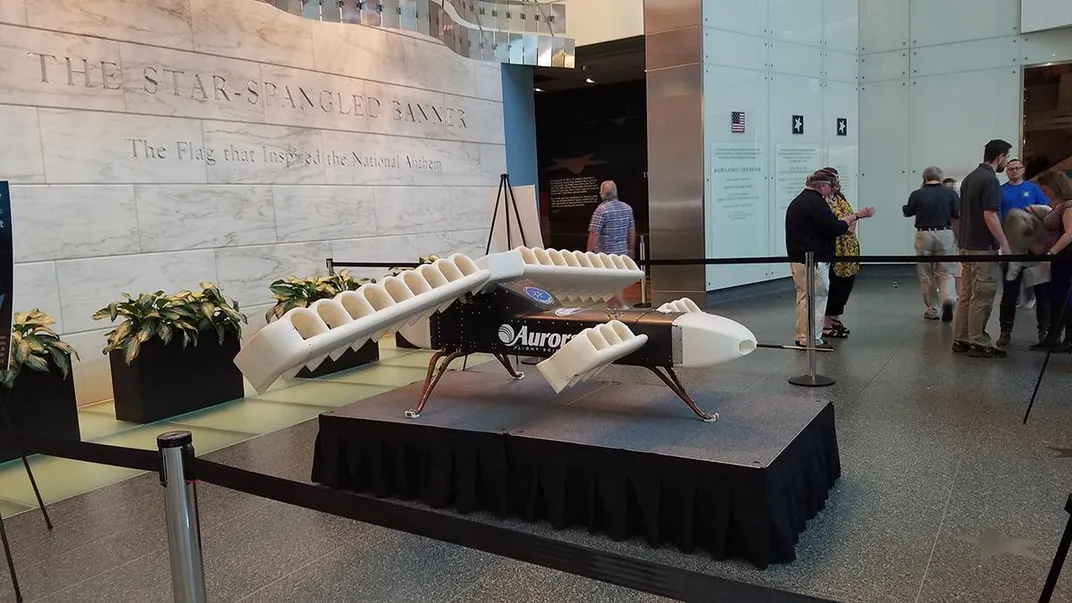
Other popular displays included DARPA’s Vertical TakeOff and Landing Experimental Aircraft, designed by Aurora Flight Systems. A crowd of people stood around gaping at the working display that was 20 percent the scale size of the actual aircraft, which weighs up to 12,000 pounds and travels up to 300 knots. It combines the best of fixed-wing aircraft technology with the hovering capabilities of a helicopter. But it may also be used in a similar way to those flying cars one used to see on “The Jetsons.”
“You’ve heard a lot about the sort of air taxis, sort of flying cars, the types of things that companies like Uber want to do for what we call the electric VTOL (vertical take-off and landing vehicle). Well, the airplane sitting here today is the closest thing to a prototype for those electric VTOL airplanes,” explains John Langford, Aurora Flight Sciences CEO. “This is a battery powered, vertical take-off and landing, it can transport you around the city. . . . This aircraft right here, it’s exactly what people are talking about for these electric VTOLs to where it could carry two or three people and you could get from here to Dulles Airport in like five minutes.”
U.S. Army Chief of Staff Mark Milley talked about the importance of technology, both on the civilian and military sides of the fence. He pointed to the iPhone, which includes technology that was originally invented by the government before being synthesized into the device we are familiar with today. Milley says there’s a synergy between civilian inventions and the military, and vice versa, and he’s looking forward to what’s coming next.
“They are advancing very rapidly in the commercial world. We’re seeing autonomous vehicles and robotic vehicles being used out there. I think there are huge military implications to that,” Milley says. “Artificial intelligence is a very powerful technology that is advancing rapidly in the commercial world. It’s clearly not ready for widespread application yet. But I do think at some point in the future it will be and it will be extraordinarily powerful.”
Milley cautions though, that while technological advances are very exciting, there will likely be some anxiety associated with them as well. The key, he says, is to learn how to manage them appropriately and in ways that are not destructive, but constructive.
/https://tf-cmsv2-smithsonianmag-media.s3.amazonaws.com/accounts/headshot/allison.png)
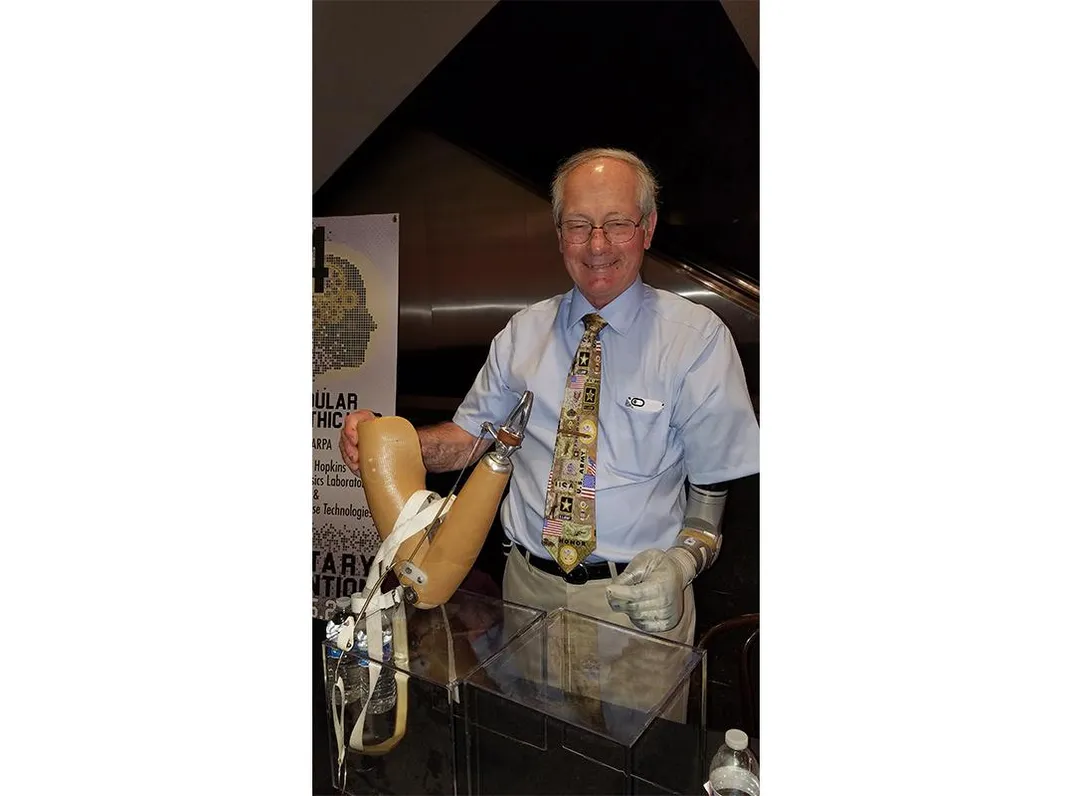
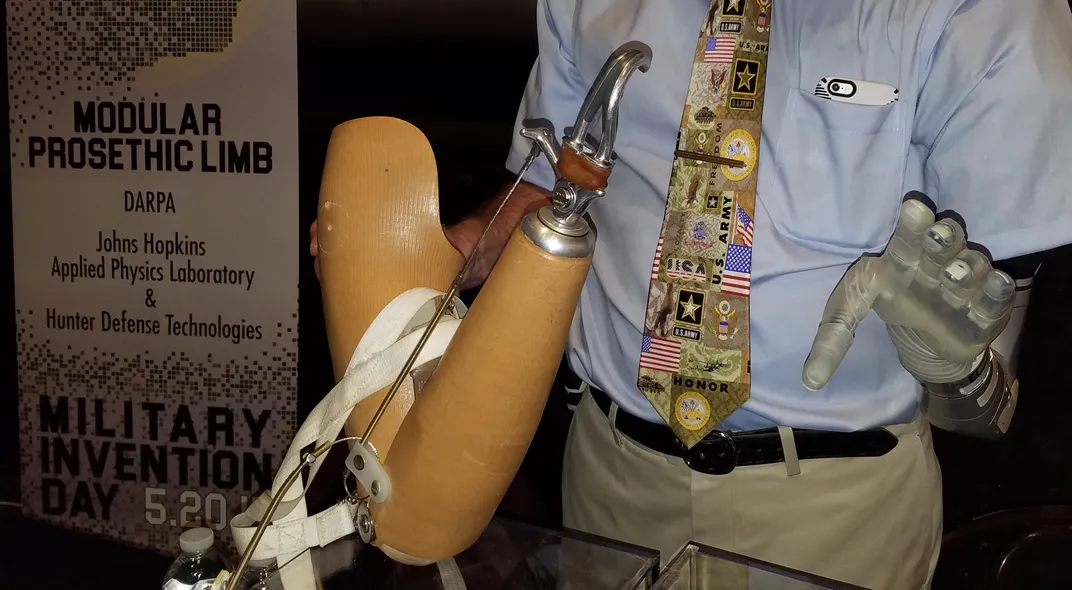
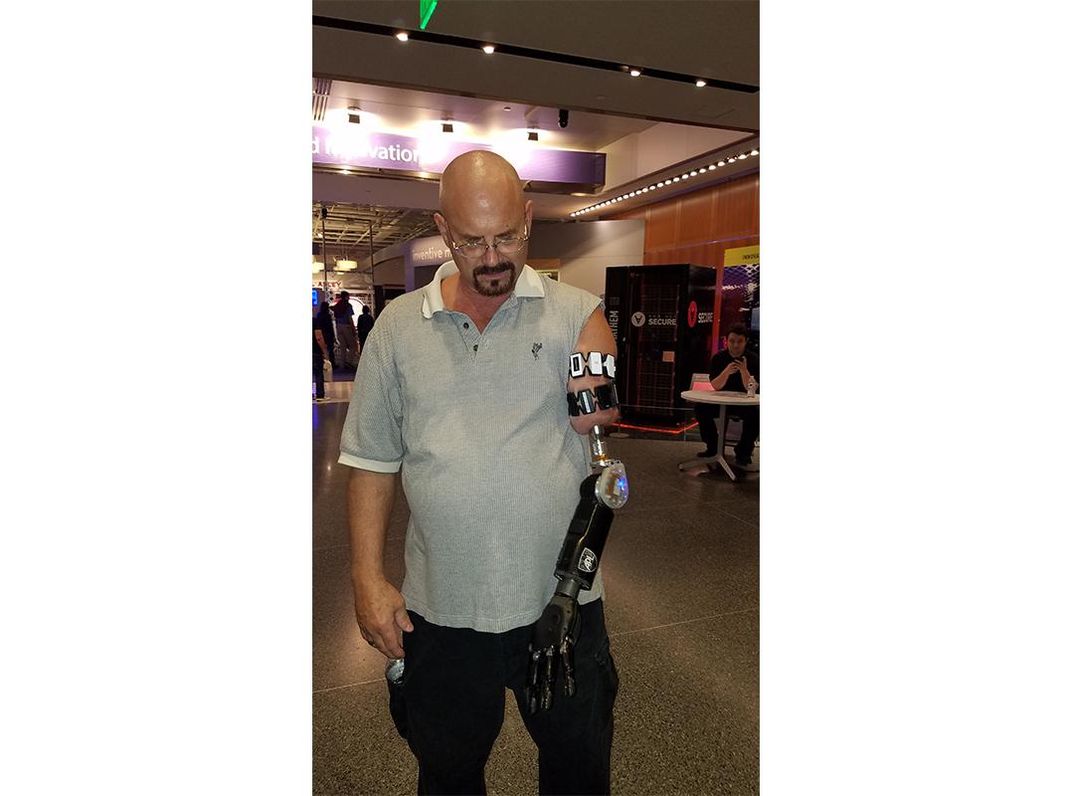
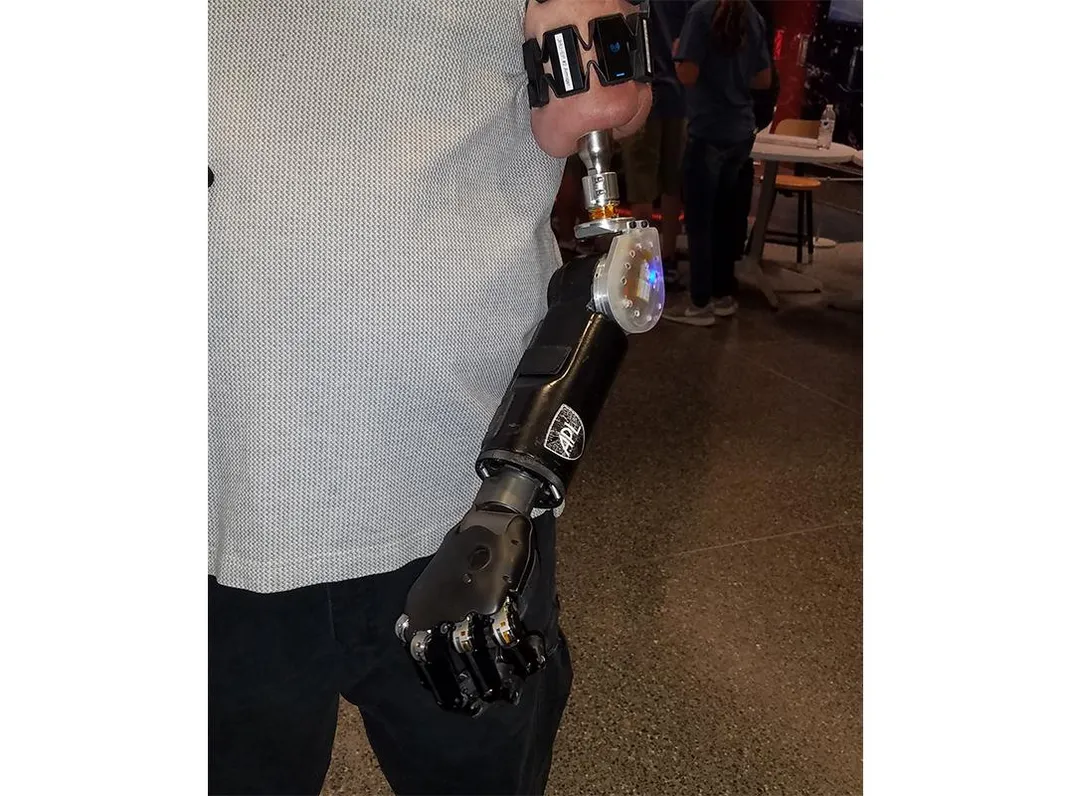
/https://tf-cmsv2-smithsonianmag-media.s3.amazonaws.com/accounts/headshot/allison.png)